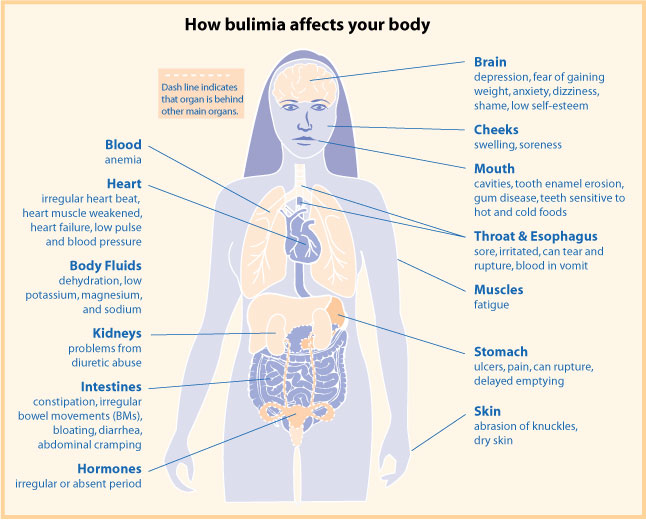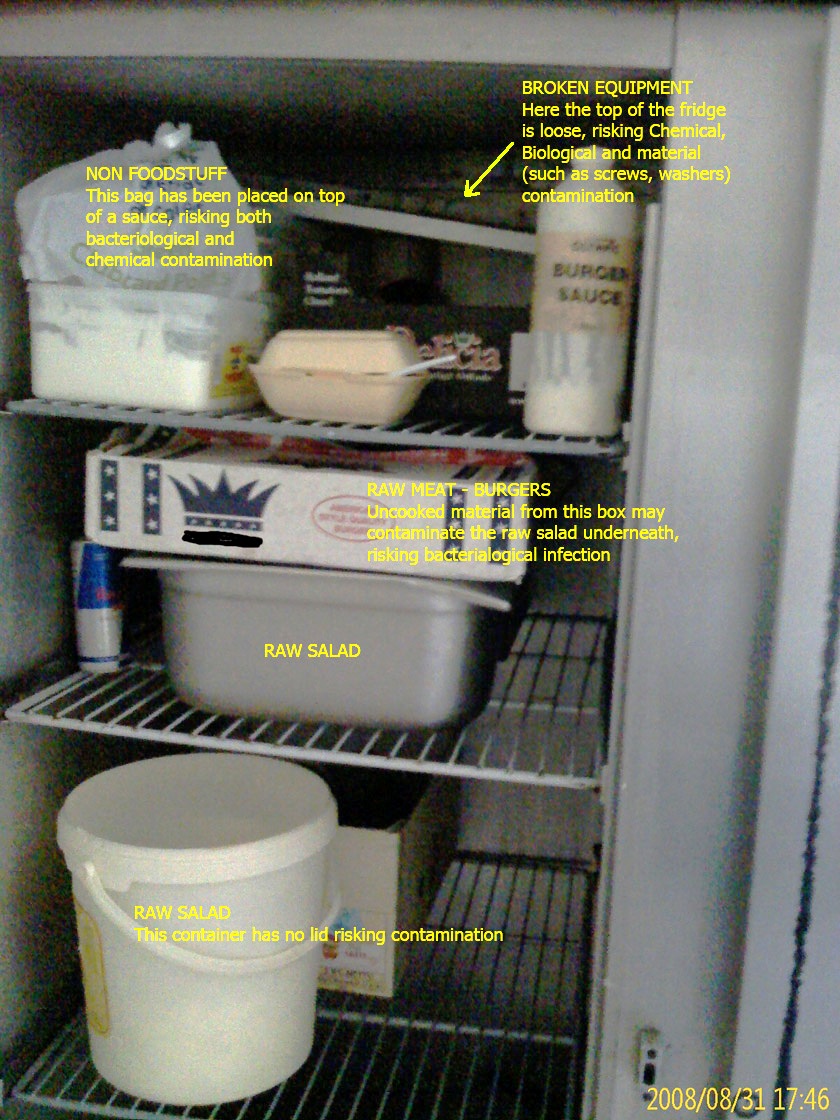|
Vomit
Vomiting (also known as emesis, puking and throwing up) is the forceful expulsion of the contents of one's stomach through the mouth and sometimes the nose. Vomiting can be the result of ailments like food poisoning, gastroenteritis, pregnancy, motion sickness, or hangover; or it can be an after effect of diseases such as brain tumors, elevated intracranial pressure, or overexposure to ionizing radiation. The feeling that one is about to vomit is called nausea; it often precedes, but does not always lead to vomiting. Impairment due to alcohol or anesthesia can cause inhalation of vomit. In severe cases, where dehydration develops, intravenous fluid may be required. Antiemetics are sometimes necessary to suppress nausea and vomiting. Self-induced vomiting can be a component of an eating disorder such as bulimia nervosa, and is itself now classified as an eating disorder on its own, purging disorder. Complications Aspiration Vomiting is dangerous if gastric content enters the ... [...More Info...] [...Related Items...] OR: [Wikipedia] [Google] [Baidu] |
Nausea
Nausea is a diffuse sensation of unease and discomfort, sometimes perceived as an urge to vomit. It can be a debilitating symptom if prolonged and has been described as placing discomfort on the chest, abdomen, or back of the throat. Over 30 definitions of nausea were proposed in a 2011 book on the topic. Nausea is a non-specific symptom, which means that it has many possible causes. Some common causes of nausea are gastroenteritis and other gastrointestinal disorders, food poisoning, motion sickness, dizziness, migraine, fainting, low blood sugar, anxiety, hyperthermia, dehydration and lack of sleep. Nausea is a side effect of many medications including chemotherapy, or morning sickness in early pregnancy. Nausea may also be caused by disgust and depression. Medications taken to prevent and treat nausea and vomiting are called antiemetics. The most commonly prescribed antiemetics in the US are promethazine, metoclopramide, and the newer ondansetron. The word na ... [...More Info...] [...Related Items...] OR: [Wikipedia] [Google] [Baidu] |
Gastroenteritis
Gastroenteritis, also known as infectious diarrhea, is an inflammation of the Human gastrointestinal tract, gastrointestinal tract including the stomach and intestine. Symptoms may include diarrhea, vomiting, and abdominal pain. Fever, lack of energy, and dehydration may also occur. This typically lasts less than two weeks. Although it is not related to influenza, in the U.S it is sometimes called the "stomach flu". Gastroenteritis is usually caused by viruses; however, gut bacteria, parasites, and fungus, fungi can also cause gastroenteritis. In children, rotavirus is the most common cause of severe disease. In adults, norovirus and ''Campylobacter'' are common causes. Eating improperly prepared food, drinking contaminated water or close contact with a person who is infected can #Transmission, spread the disease. Treatment is generally the same with or without a definitive diagnosis, so testing to confirm is usually not needed. For young children in impoverished countries, pre ... [...More Info...] [...Related Items...] OR: [Wikipedia] [Google] [Baidu] |
Bulimia Nervosa
Bulimia nervosa, also known simply as bulimia, is an eating disorder characterized by binge eating (eating large quantities of food in a short period of time, often feeling out of control) followed by compensatory behaviors, such as self-induced vomiting or fasting, to prevent weight gain. Other efforts to lose weight may include the use of diuretics, laxatives, stimulants, water fasting, or excessive exercise. Most people with bulimia are at normal weight and have higher risk for other mental disorders, such as depression, anxiety, borderline personality disorder, bipolar disorder, and problems with drugs to alcohol. There is also a higher risk of suicide and self-harm. Bulimia is more common among those who have a close relative with the condition. The percentage risk that is estimated to be due to genetics is between 30% and 80%. Other risk factors for the disease include psychological stress, cultural pressure to attain a certain body type, poor self-esteem, and obes ... [...More Info...] [...Related Items...] OR: [Wikipedia] [Google] [Baidu] |
Antiemetic
An antiemetic is a drug that is effective against vomiting and nausea. Antiemetics are typically used to treat motion sickness and the side effects of opioid analgesics, general anaesthetics, and chemotherapy directed against cancer. They may be used for severe cases of gastroenteritis, especially if the patient is dehydrated. Some antiemetics previously thought to cause birth defects appear safe for use by pregnant women in the treatment of morning sickness and the more serious hyperemesis gravidarum. __TOC__ Types * 5-HT3 receptor antagonists block serotonin receptors in the central nervous system and gastrointestinal tract. As such, they can be used to treat post-operative and cytotoxic drug nausea & vomiting. However, they can also cause constipation, dry mouth, and fatigue. ** Dolasetron (Anzemet) can be administered in tablet form or in an injection. ** Granisetron (Kytril, Sancuso) can be administered in tablet (Kytril), oral solution (Kytril), injection (Kyt ... [...More Info...] [...Related Items...] OR: [Wikipedia] [Google] [Baidu] |
Motion Sickness
Motion sickness occurs due to a difference between actual and expected motion. Symptoms commonly include nausea, vomiting, cold sweat, headache, dizziness, tiredness, loss of appetite, and increased salivation. Complications may rarely include dehydration, electrolyte problems, or a lower esophageal tear. The cause of motion sickness is either real or perceived motion. This may include car travel, air travel, sea travel, space travel, or reality simulation. Risk factors include pregnancy, migraines, and Ménière's disease. The diagnosis is based on symptoms. Treatment may include behavioral measures or medications. Behavioral measures include keeping the head still and focusing on the horizon. Three types of medications are useful: antimuscarinics such as scopolamine, H1 antihistamines such as dimenhydrinate, and amphetamines such as dexamphetamine. Side effects, however, may limit the use of medications. A number of medications used for nausea such as ondansetro ... [...More Info...] [...Related Items...] OR: [Wikipedia] [Google] [Baidu] |
Pregnancy
Pregnancy is the time during which one or more offspring gestation, gestates inside a woman's uterus. A multiple birth, multiple pregnancy involves more than one offspring, such as with twins. Conception (biology), Conception usually occurs following sexual intercourse, vaginal intercourse, but can also occur through assisted reproductive technology procedures. A pregnancy may end in a Live birth (human), live birth, a miscarriage, an Abortion#Induced, induced abortion, or a stillbirth. Childbirth typically occurs around 40 weeks from the start of the Menstruation#Onset and frequency, last menstrual period (LMP), a span known as the Gestational age (obstetrics), ''gestational age''; this is just over nine months. Counting by Human fertilization#Fertilization age, ''fertilization age'', the length is about 38 weeks. Implantation (embryology), Implantation occurs on average 8–9 days after Human fertilization, fertilization. An ''embryo'' is the term for the deve ... [...More Info...] [...Related Items...] OR: [Wikipedia] [Google] [Baidu] |
Gastroenterology
Gastroenterology (from the Greek gastḗr- "belly", -énteron "intestine", and -logía "study of") is the branch of medicine focused on the digestive system and its disorders. The digestive system consists of the gastrointestinal tract, sometimes referred to as the ''GI tract,'' which includes the esophagus, stomach, small intestine and large intestine as well as the accessory organs of digestion which include the pancreas, gallbladder, and liver. The digestive system functions to move material through the GI tract via peristalsis, break down that material via digestion, absorb nutrients for use throughout the body, and remove waste from the body via defecation. Physicians who specialize in the medical specialty of gastroenterology are called gastroenterologists or sometimes ''GI doctors''. Some of the most common conditions managed by gastroenterologists include gastroesophageal reflux disease, gastrointestinal bleeding, irritable bowel syndrome, inflammatory bowel disease (IBD ... [...More Info...] [...Related Items...] OR: [Wikipedia] [Google] [Baidu] |
Dehydration
In physiology, dehydration is a lack of total body water that disrupts metabolic processes. It occurs when free water loss exceeds intake, often resulting from excessive sweating, health conditions, or inadequate consumption of water. Mild dehydration can also be caused by immersion diuresis, which may increase risk of decompression sickness in divers. Most people can tolerate a 3-4% decrease in total body water without difficulty or adverse health effects. A 5-8% decrease can cause fatigue and dizziness. Loss of over 10% of total body water can cause physical and mental deterioration, accompanied by severe thirst. Death occurs with a 15 and 25% loss of body water.Ashcroft F, Life Without Water in Life at the Extremes. Berkeley and Los Angeles, 2000, 134-138. Mild dehydration usually resolves with oral rehydration, but severe cases may need intravenous fluids. Dehydration can cause hypernatremia (high levels of sodium ions in the blood). This is distinct from hypovolemia ... [...More Info...] [...Related Items...] OR: [Wikipedia] [Google] [Baidu] |
Hangover
A hangover is the experience of various unpleasant physiological and psychological effects usually following the consumption of alcohol (beverage), alcohol, such as wine, beer, and liquor. Hangovers can last for several hours or for more than 24 hours. Typical symptoms of a hangover may include headache, Somnolence, drowsiness, weakness, concentration problems, Xerostomia, dry mouth, dizziness, fatigue (medical), fatigue, muscle ache, gastrointestinal distress (e.g., nausea, vomiting, diarrhea), Anorexia (symptom), absence of hunger, Photophobia, light sensitivity, Depression (mood), depression, Perspiration, sweating, hyper-excitability, high blood pressure, irritability, and Anxiety attack, anxiety. While the causes of a hangover are still poorly understood, several factors are known to be involved including acetaldehyde accumulation, changes in the immune system and glucose metabolism, dehydration, metabolic acidosis, disturbed prostaglandin synthesis, increased cardiac out ... [...More Info...] [...Related Items...] OR: [Wikipedia] [Google] [Baidu] |
Food-poisoning
Foodborne illness (also known as foodborne disease and food poisoning) is any illness resulting from the contamination of food by pathogenic bacteria, viruses, or parasites, as well as prions (the agents of mad cow disease), and toxins such as aflatoxins in peanuts, poisonous mushrooms, and various species of beans that have not been boiled for at least 10 minutes. While contaminants directly cause some symptoms, many effects of foodborne illness result from the body's immune response to these agents, which can vary significantly between individuals and populations based on prior exposure. Symptoms vary depending on the cause. They often include vomiting, fever, aches, and diarrhea. Bouts of vomiting can be repeated with an extended delay in between. This is because even if infected food was eliminated from the stomach in the first bout, microbes, like bacteria (if applicable), can pass through the stomach into the intestine and begin to multiply. Some types of microbes stay ... [...More Info...] [...Related Items...] OR: [Wikipedia] [Google] [Baidu] |
Anesthesia
Anesthesia (American English) or anaesthesia (British English) is a state of controlled, temporary loss of sensation or awareness that is induced for medical or veterinary purposes. It may include some or all of analgesia (relief from or prevention of pain), paralysis (muscle relaxation), amnesia (loss of memory), and unconsciousness. An individual under the effects of anesthetic drugs is referred to as being anesthetized. Anesthesia enables the painless performance of procedures that would otherwise require physical restraint in a non-anesthetized individual, or would otherwise be technically unfeasible. Three broad categories of anesthesia exist: * ''General anesthesia'' suppresses central nervous system activity and results in unconsciousness and total lack of Sensation (psychology), sensation, using either injected or inhaled drugs. * ''Sedation'' suppresses the central nervous system to a lesser degree, inhibiting both anxiolysis, anxiety and creation of long-term memory, ... [...More Info...] [...Related Items...] OR: [Wikipedia] [Google] [Baidu] |








